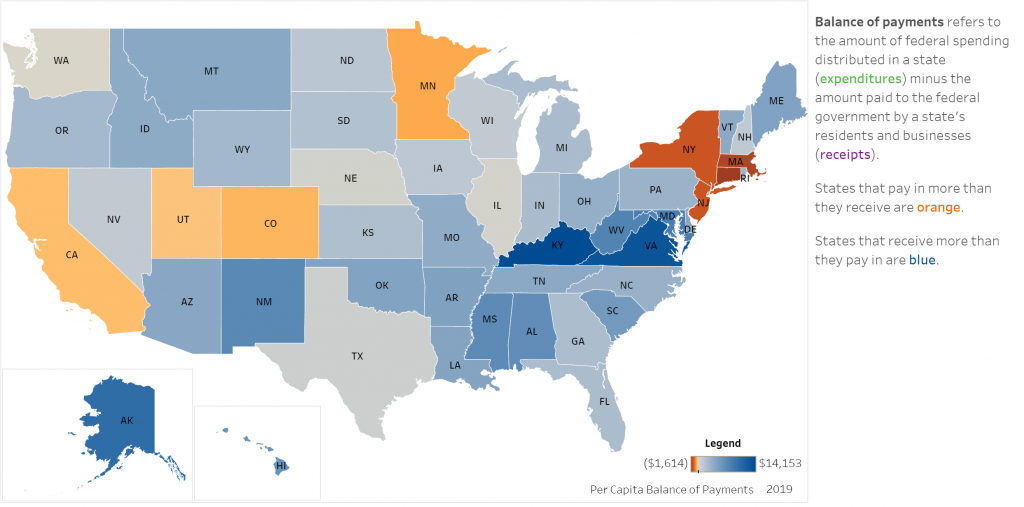The federal government spends trillions of dollars each fiscal year, affecting the lives of all Americans. This spending and the revenue raised to support it are distributed differently across the country. Because one goal of the federal system is redistribution, it is not surprising that some states “give” far more than they “get,” while the opposite is true for other states.
Before policymakers can draw conclusions about whether there is too much redistribution or too little, they need to understand what the facts are, and why. To help with this goal, the Rockefeller Institute of Government examines each state’s “balance of payments” with the federal government — the amount of revenue paid to the federal government from the state’s residents and economy, compared to federal spending in the state. In doing so, the Rockefeller Institute pays particular attention to its home state of New York.
In its fourth annual analysis (2021), the Rockefeller Institute has estimated the distribution of Federal budget receipts and expenditures across the United States. This report examines where Federal funds are generated and spent, the balance of payments differential that exists between the states, the primary explanations for those differences, and how those gaps change over time.
Key findings from this year’s report include:
- Over five years, New York taxpayers have given $142.6 billion more to the federal government than they have received back in federal spending, the most of any state.
- New York’s shortfall in 2019 is larger than that of second-ranked New Jersey (-$10.3 billion) and third-ranked Massachusetts (-$9.9 billion) combined. California and Connecticut round out the list of the top five states with the least favorable balances.
- New York’s negative per capita balance of payments is less than all but Connecticut (-$1,614) and Massachusetts (-$1,439).

Analyze the balance of Payments data on the Rockefeller Institution portal: https://rockinst.org/issue-areas/fiscal-analysis/balance-of-payments-portal/
Read the full report: https://rockinst.org/issue-area/balance-of-payments-2021/